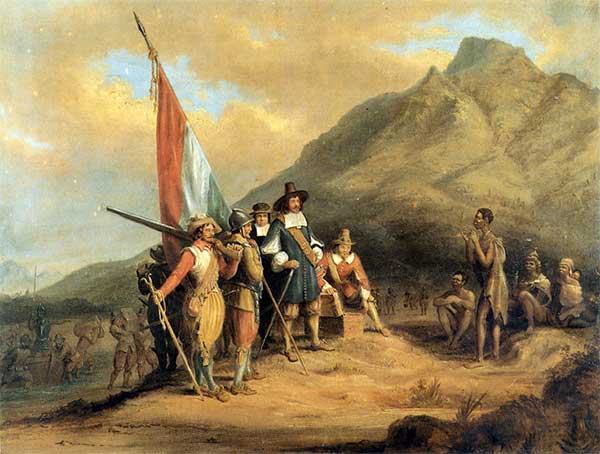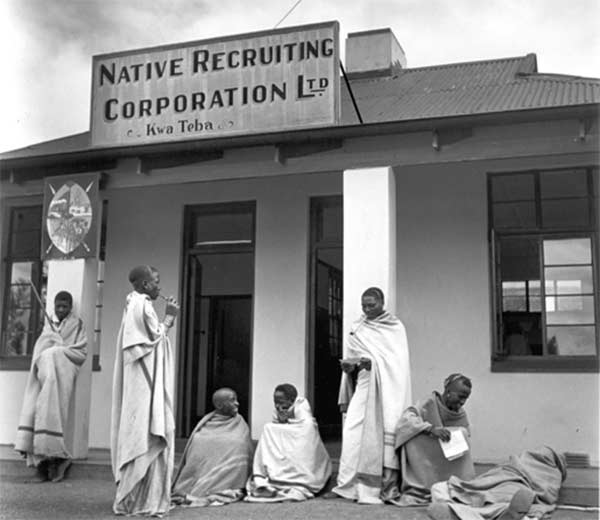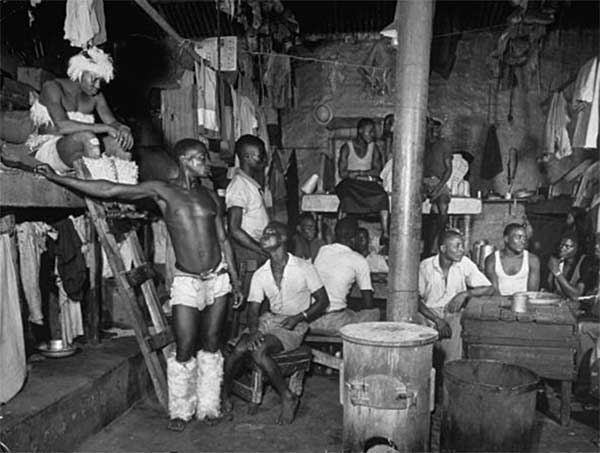Venereal syphilis was introduced into the Cape by sailors, soldiers and European settlers from the 17th C onwards but remained largely limited to coastal towns.

South Africa’s major syphilis epidemic emerged in the late 1800’s as a direct consequence of the discovery of diamonds, and then gold. Between 1871 and 1895, around 100 000 men of all races came from all parts of Southern African to the Kimberley diamond diggings, creating a large market for prostitution. By 1939, almost 350 000 black men were employed in the Transvaal gold mines. In Natal, the coalmines and sugar industry also recruited (migrant) labour en masse.

Group of workers in compound, Kimberley diamond mines.
Image credit: Sixteen Tons, accessed October 31, 2014, http://sixteentons.matrix.msu.edu/items/show/48
The black miners left their families behind. They were typically away for 6 – 10 months of the year. Sex workers and casual sexual partners replaced wives. With squalid accommodation and a lack of recreational activities or psychosocial support, alcohol abuse was rife. These conditions fuelled the massive spread of sexually transmitted infections.
Work on the mines was always temporary and after a variable time the men returned home permanently. The chronically sick were also dismissed back to their homes, thus actively exporting disease to rural areas. As conditions in rural areas worsened, black women began to migrate to towns, joining male kin or living independently – these 'loose town women' were blamed for spreading VD (Venereal Disease) among black men.

Mine recruitment office, Transkei, 1947-48.
Image credit: Constance Stuart Larrabee, Smithsonian Institution, National Museum of African Art, Eliot Elisofon Photographic Archives

Miners in crowded barracks, Johannesburg, 1950
Image credit: Constance Stuart Larrabee, Smithsonian Institution, National Museum of African Art, Eliot Elisofon Photographic Archives

During the Boer War of 1899 to 1902, British troops moved around the country spreading VD in their wake through liasons with prostitutes, compromised Boer women and black tradeswomen.
British troops burning the house and confiscating the goods of a Boer.
Image credit: Originally published in Illustrated London News 26 May 1900.

Image credit: Constance Stuart Larrabee, Smithsonian Institution, National Museum of African Art, Eliot Elisofon Photographic Archives
